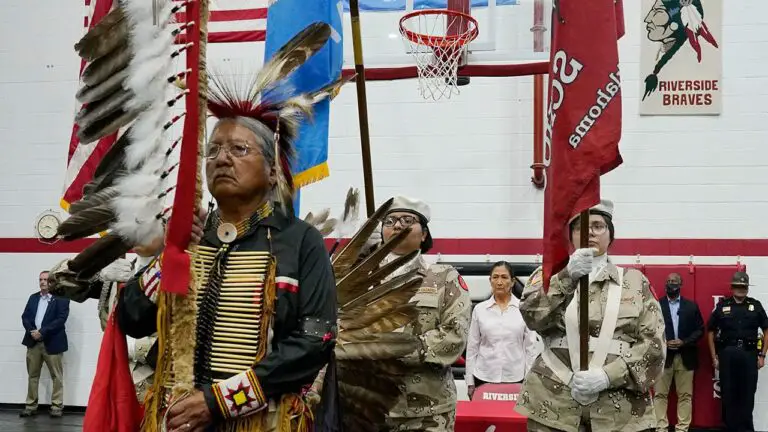New Interactive Map Reveals Troubling Legacy of Indigenous Boarding Schools
A group committed to uncovering the painful history of Indigenous boarding schools, where children were stripped of their culture and language as part of assimilation efforts, has unveiled an innovative interactive map. This map now includes numerous additional schools across the United States and Canada.
The National Native American Boarding School Healing Coalition had already compiled the most extensive list of boarding schools, reaching a total of 523 schools. Each dot on the map offers a quick overview of the school.
Based in Minnesota, this group has dedicated years to collecting data, with recent support from the U.S. Interior Department. Last year, the federal agency shared its own list of over 400 schools, aiming to acknowledge the long-lasting trauma caused by these boarding school policies.
The coalition’s latest research brought to light an extra 115 schools. Most of these were run by church institutions without federal support. These schools had the authority to establish institutions to carry out U.S. policies that aimed to assimilate Native children.
Samuel Torres, the deputy chief executive of the coalition, sees the map as a valuable tool for relatives seeking answers and those on a path to healing.
“In every corner of this country, Indigenous individuals have felt the impact of the deliberate attempt to destroy Native families and cultures through boarding schools,” Torres stated. “Seeing the extent of what our communities and Nations endured on such a large scale is overwhelming, but this work is crucial to revealing the truth about this dark chapter in American history.”
The coalition is already utilizing these new findings to guide future research and efforts to digitize archives. In November, they plan to update the map to include links to archival records.
The map’s creation was a collaboration with Canada’s National Centre for Truth and Reconciliation. This center focuses on educating people about the injustices faced by First Nations, Inuit, and the Métis Nation due to the forced removal of children from their families.
Jessie Boiteau, a senior archivist for the center and a member of the Métis Nation, emphasized the significance of this digital map. “This map doesn’t just capture history,” Boiteau explained, “it also serves as a tool to shape the future.”

